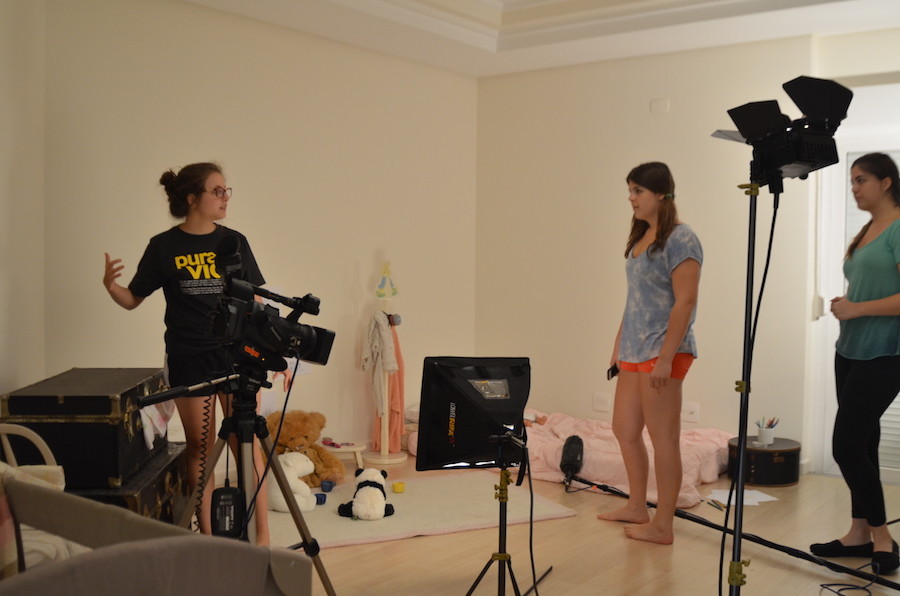The digital takeover of film
Celluloid film: Nolan, Apatow, Tarantino, Scorsese, and Abrams approved. Reflecting on the photographic industry’s glorious past, it is impossible not to admire the role celluloid film has played in its growth. From the first ever motion-picture, the Lumiére brothers’ iconic documentary La Sortie de l’Usine Lumière à Lyon (1895), to Hollywood big-budget director Christopher Nolan’s latest film Interstellar (2014), celluloid film has been cemented into cinematic history as the preferred medium for capturing the moving images we cherish. However, we are in a digital revolution: Photographic sensors are replacing film stock; Blu-Ray players are beginning to substitute film projectors. Unfortunately, nobody is doing much to stop it. Is nothing holy?
About three years ago I bought my first film camera, the Diana F+. It shot in old 120mm film, which is harder to find in suburban Minnesota than an atheist Republican, but the soft click of the mechanical shutter was enough to pique my interest in using film rather than digital methods. The Diana F+ is a modern remake of the plastic Diana camera produced in the early 1960’s by the Hong Kong manufacturer The Great Wall Plastic Company. Much like the original, it is built entirely of plastic, giving a signature impressionist-feel reminiscent of the Pictorialist movement, a twentieth-century art-photography period known for its dream-like style and formalistic composition. After a few months of shooting with the Diana F+, I noticed film has an undeniable charm, a charm that still resonates with me and many other enthusiasts.
How does all this translate into the modern film industry? More than ever, directors are opting to shoot in native digital cameras rather than film, followed by digitizing the footage as seen in the near past. The release of cameras such as the RED Epic Dragon, ARRI Alexa, and Black Magic Ursa has meant that shooting digitally can measure up, and even surpass, the resolution available on film; now the movie industry is jabbering about 4K, 6K, and even 8K video capturing—in layman’s terms, these resolutions are so high almost all modern TVs cannot handle them. But does this mean digital is necessarily better? Many of the cinema industry’s biggest names started shooting on film, and, even with the ever-growing perks of shooting with digital cameras, these directors are still opting to shoot on celluloid film.
Writer-director Martin Scorsese (Taxi Driver, Raging Bull, Casino, The Wolf of Wall Street) shared his view on the importance of keeping the tradition of shooting on film alive, stating in an interview that “film is also an art form, and young people who are driven to make films should have access to the tools and materials that were the building blocks of that art form. Would anyone dream of telling young artists to throw away their paints and canvases because iPads are so much easier to carry?” But shooting on film is not only a matter of tradition. Quentin Tarantino (Pulp Fiction, Reservoir Dogs, Jackie Brown) is also a big supporter of shooting on film, and despite his obvious ability to purchase high-end digital equipment, he still plans on shooting his next movie, The Hateful Eight, in self-described “GLORIOUS 70MM SUPER CINEMASCOPE” film—expressed in the all caps of true Tarantino fashion. This would make The Hateful Eight the fourth movie to be shot on 70mm film in the past 20 years.
Not all filmmakers agree on returning to traditional film methods. Director Mike Leigh (Mr. Turner, Happy-Go-Lucky, Secrets and Lies) calls Tarantino’s efforts to keep the art of celluloid film alive as “a backward-looking statement that is irresponsible. […] There are young filmmakers doing all sorts of fantastic things and part of the reason that’s possible is the democratization of the medium because of a new technology, so [Tarantino’s fight] is twaddle.” As a film student, I agree with Leigh’s point. When shooting digitally, I do not have to worry about wasting film stock or shielding the film from the evil sunrays before it is developed, amongst other concerns; all I need is a high-capacity SD card. With digital methods, making a movie has never been so fast, easy, and accessible to the amateur. Conversely, shooting on film proves a time-consuming and costly task. Buying film stock for each project is much more expensive than a one-time purchase of an SD, which can be erased and overwritten. Although the expense of using film is prohibitive for many filmmakers, there is no greater feeling than receiving a small parcel labeled “DEVELOPED” and finding its contents to be rolls or spools of one’s shots beautifully imprinted onto film and ready for projecting or scanning.
As a big supporter of celluloid film, I would be devastated with a full switch to digital filmmaking. Although the industry will always desire newer technology, it is important to cultivate the culture of movie-making. Sure, 8mm film grew to Super 8mm, 16mm to Super 16mm, and 35mm film to 70mm film, but to cease celluloid film production entirely is to reject the film industry’s rich past, which I see as a danger to the craft. Observing the future of celluloid film will be interesting, and, fingers-crossed, it will not just be relegated to the background of big-city hipster flicks.

In his second year in the Talon, Yoji managed to rise to the top of the Entertainment ranks, where he was once a lowly reporter. Yoji now plans to rule...









